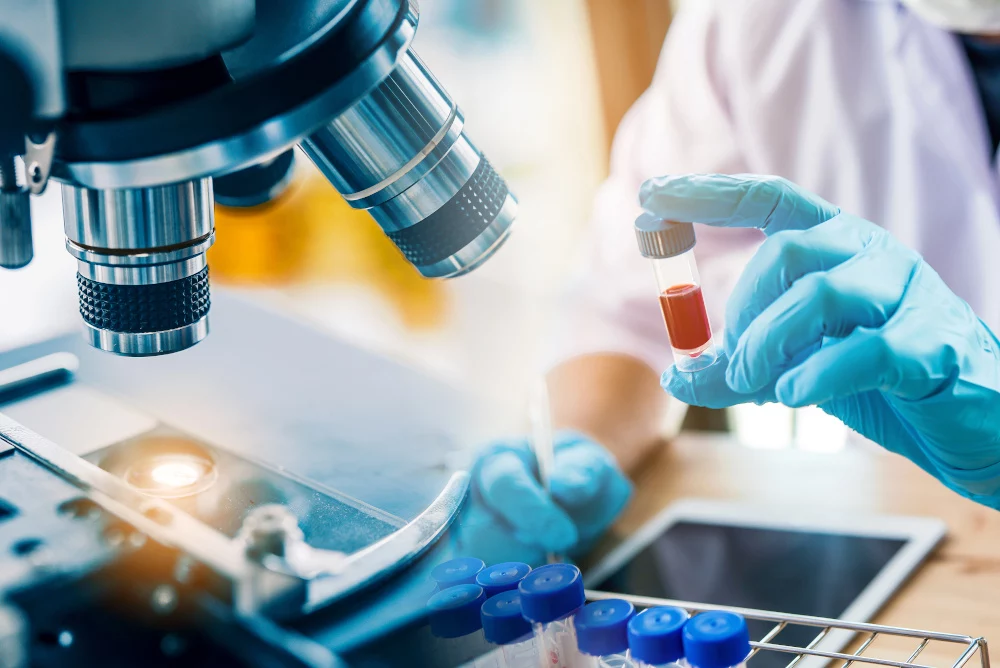
COVID and the central lab: A checklist for the dietary supplement industry
Central pathology labs are increasingly important resources in dietary supplement clinical trials, but even they need to be assessed especially in COVID times.
Pathology laboratories play an important role in dietary supplement and natural product clinical trials. Pathology labs, for instance, handle blood, urine, and other tests critical to any clinical trial. For supplement companies, working with the right kind of pathology lab is important—especially when there’s so much on the line in the context of a clinical trial. It’s imperative to ensure results are accurate in order to then determine whether or not an ingredient or product showed clinically significant results for the biomarkers researchers are testing.
Pathology labs can take several forms. Two that we will discuss here are local labs and central labs.
Local labs are located on site—for instance, at a local hospital—where testing is then performed. By contrast, samples can instead be sent off-site to a central laboratory, a specialized lab site that specifically exists to perform such testing. A central lab is that pathological lab that is solely responsible for preparing/performing study-specific test kits, test requisition forms, lab assessments, and, finally, issuing the lab report, signed by a qualified pathologist.
Central laboratories are increasingly becoming the preferred choice of pathology lab by quality-conscious sponsors and contract research organizations (CROs), for several reasons.
The role of a central lab is crucial in a multi-center setting. Central labs can handle data coming in from different local labs. A central lab can manage differences in reference ranges, sensitivities, and detection limits. A central lab will also standardize and ensure quality control. For these reasons, it is always best practice to use the services of a central lab to analyze all clinical trial specimens.
During the COVID-19 pandemic when many pathology labs have been tied up, central labs have become even more helpful and relied upon to keep non-COVID-related work flowing. With the surge in COVID testing globally, all pathology labs have been flooded with high-priority COVID testing and, as a result, non-COVID clinical analyses may take a back seat. With labs so overwhelmed, developing and validating protocols for clinical trial markers has become challenging. There is also the possibility of increased delays in reports, and higher chances of false positive and false negative results and incorrect lab values. By working with one central lab, researchers and CROs stand a better chance of reducing the chance of errors.
Due-Diligence Still Needed
Still, like all labs, central labs are also challenged during this time, and so there are important factors to consider—and important checks to be made.
Central labs may also be experiencing reduced manpower at the lab due to COVID restrictions and absentees. Staff may be adhering to travel restrictions. There may also be reduced supervision. A lab may be training new recruits, and refresher courses for the existing staff may take a back seat. Another possibility is missed calibration dates due to non-availability of skilled technicians, unavailability of calibration vendors, and reduced supply of calibrator standards and reagents. And, of course, the lab may still need to prioritize other high-priority infectious samples for analysis.
With this in mind, vigilant CROs will perform regular vendor audits of central labs—in other words, “Trust but Verify.” Audits can also be done in person, as it is understood that not everything can be verified from behind digital screens.
Even if the central lab has all the credentials, it is better to audit the quality management system of the lab and evaluate if the lab has all the important SOPs in place. This includes checking and verifying:
- That important lab SOPs are audited
- Proper registration of samples
- Proper generation of test requisition forms
- Proper storage of lab kits, reagents, calibrators, and controls
- Calibration and maintenance of equipment
- Training of lab personnel
- In-process quality control measures
- Daily validation checks
- Proper report generation and release
Check for the availability of calibrators, positive and negative controls, and trained lab technicians. Lab technicians should undergo induction and annual refresher training. During these pandemic times, as mentioned, it is possible that training will take a back seat, so check with a central lab that this has not slipped through the cracks. Also, ask the lab to share the raw data of the analyses. This will help keep tabs on compliance with protocols.
Real-World Messiness
Recently, in an audit of a reputed central lab, we found a full set of controls not being run before every analysis. Samples were not being run in duplicate, dilutions of the samples were not performed in the event of analytical values exceeding detection limits, and annual trainings were not being performed for the lab technicians. It was only after the audit that the samples were run again in strict compliance with the lab inserts and protocols. Refresher training was performed for all, and fresh reports were issued.
The Takeaway?
In short, there can be no alternative to a physical audit of a facility. Post-mortem review of the data has limited value. Real-time data checks and corrections prevent research dollars from going down the drain.
These are special times and require special checks to ensure that positive results are indeed positive and that negative results are indeed negative in lab reports.
Anil Yadav is senior manager of quality assurance for Vedic Lifesciences (Mumbai, India), a contract research organization (CRO) serving the dietary supplement industry by performing clinical and toxicological work. Visit https://vediclifesciences.com to learn more or e-mail connect@vediclifesciences.com.


